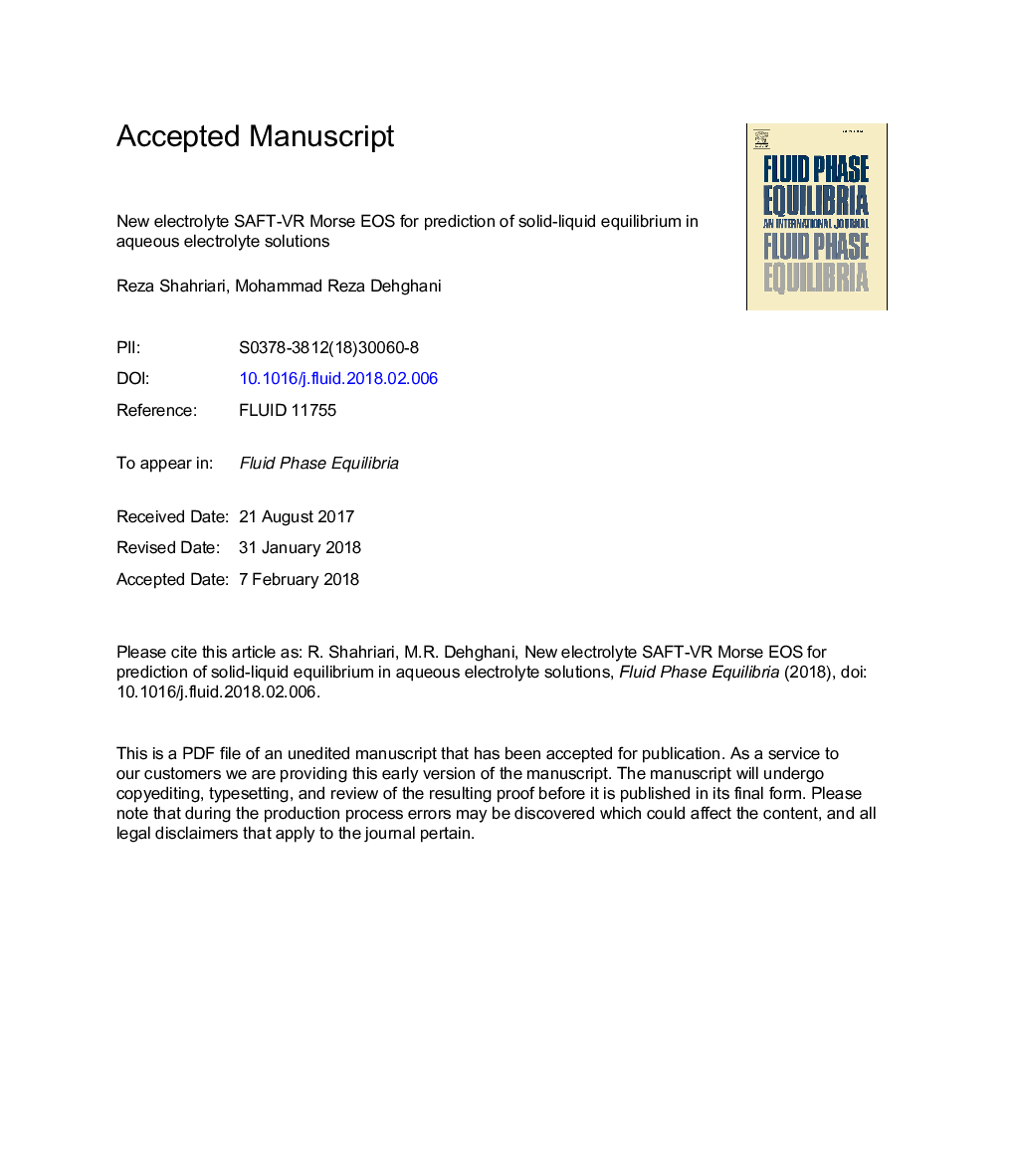| Article ID | Journal | Published Year | Pages | File Type |
|---|---|---|---|---|
| 6619246 | Fluid Phase Equilibria | 2018 | 49 Pages |
Abstract
This work presents a new SAFT-VR Electrolyte equation of state (SAFT-VRE Morse EOS) that can predict solid-liquid equilibrium and second order derivative properties of electrolyte solutions. In this study, variable range statistical associating fluid theory (SAFT-VR Morse) EOS was extended to electrolyte solutions. In this model short-range interactions were mimicked by SAFT-VR Morse EOS, and long-range and solvation interactions were modeled by Debye-Hückle and Born terms respectively. Global ion parameters were adjusted using single electrolyte mean ionic activity coefficient (MIAC) and solution densities data at 25â¯Â°C and 1â¯atm. Using obtained ion-specific parameters, thermodynamic properties of aqueous electrolyte solutions such as MIAC, osmotic coefficient, vapor pressure, Gibbs free energy of hydration and excess enthalpy of solution were predicted without any adjustable parameter. Then, the model capability was evaluated in phase behavior calculations over a wide range of salt concentrations. In this respect, solid-liquid equilibrium (SLE) phase diagrams for mixed-electrolyte were predicted up to high temperatures. The results show that the model can predict the MIAC, osmotic coefficient, vapor pressure, and SLE of mixed electrolyte solutions up to 100â¯Â°C. Obtained results prove that SAFT-VRE Morse can efficiently be utilized for electrolyte solutions. We attribute this capability to utilizing the SAFT-VR Morse EOS as dispersion term.
Related Topics
Physical Sciences and Engineering
Chemical Engineering
Chemical Engineering (General)
Authors
Reza Shahriari, Mohammad Reza Dehghani,
